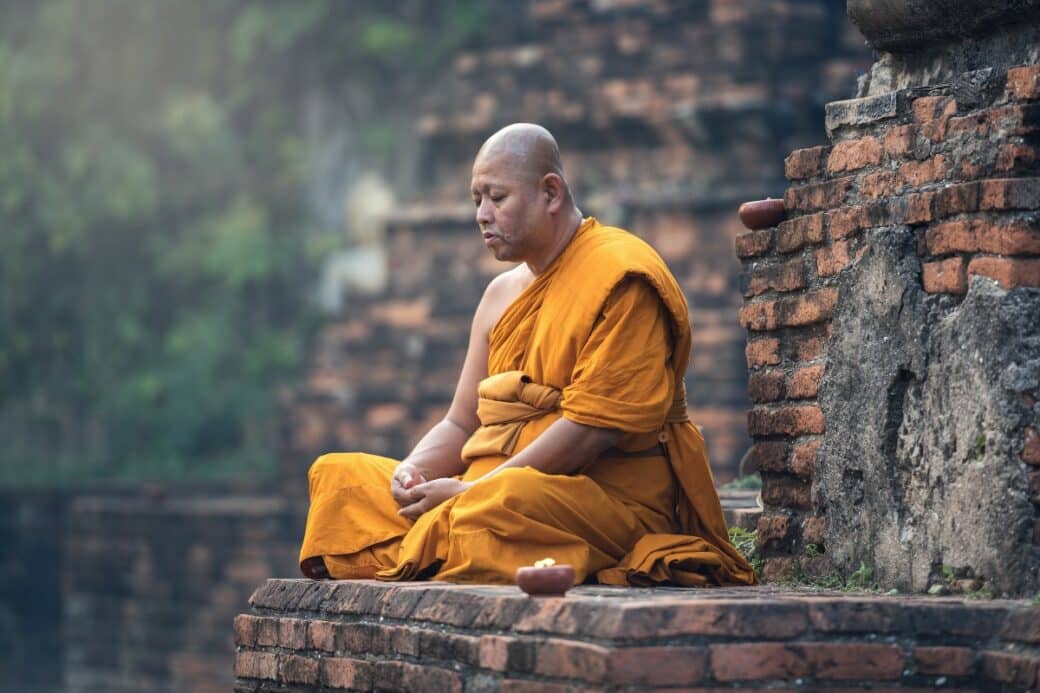Have you ever wondered about Kundalini meditation and its transformative powers? Kundalini meditation is a powerful practice that aims to awaken the dormant energy within you, bringing about profound changes in your physical, mental, and spiritual well-being. By tapping into this inner energy, Kundalini meditation can unlock your true potential, enhance your creativity, and bring about a deep sense of peace and inner bliss. In this article, we will explore the essence of Kundalini meditation and how it can help you embark on a journey of self-discovery and self-transformation.
Understanding Kundalini
Kundalini refers to the dormant energy that resides within every individual. It is often depicted as a coiled serpent resting at the base of the spine. Kundalini meditation aims to awaken this dormant energy and allow it to flow freely throughout the body, bringing a profound sense of awareness and spiritual enlightenment. In this article, we will explore the origins, meaning, concepts, and beliefs associated with Kundalini, as well as the energy centers it interacts with and the transformative effects of Kundalini meditation.
Origins of Kundalini
The origins of Kundalini can be traced back to ancient Indian scriptures and spiritual traditions. It is believed to have been first mentioned in the Upanishads, which are philosophical texts that form the foundation of Hinduism. These scriptures describe Kundalini as the vital life force residing within the human body, responsible for our spiritual evolution and the awakening of consciousness.
Meaning of Kundalini
The word “Kundalini” is derived from the Sanskrit term “kunda”, which means “coiled”. This symbolizes the dormant energy that lies curled up at the base of the spine, like a tightly coiled serpent. Kundalini is often associated with the divine feminine energy, representing the divine creative potential within each individual. It is believed that through Kundalini meditation, this energy can be awakened and directed towards spiritual growth and self-realization.
Concepts and Beliefs Associated with Kundalini
Symbolism in Kundalini
Kundalini is rich in symbolism, representing various aspects of human consciousness and spiritual awakening. The coiled serpent at the base of the spine represents dormant potential waiting to be unleashed. As Kundalini energy rises through the energy centers of the body, known as chakras, it is believed to bring enlightenment, healing, and transformation. The symbolism of Kundalini underscores the innate power and divinity that resides within each individual.
Kundalini and Hinduism
Kundalini is deeply rooted in Hinduism and is considered a sacred spiritual practice. In Hindu philosophy, it is believed that Kundalini is the divine energy that connects an individual with the universal consciousness. It is seen as the essence of the self, representing the journey from ignorance to enlightenment. Various Hindu texts and scriptures provide guidance on the awakening and cultivation of Kundalini energy to attain spiritual liberation.
Kundalini and Buddhism
While Kundalini meditation has strong ties to Hinduism, it also holds significance in Buddhism. In Buddhism, Kundalini is referred to as “Candali”, and the awakening of this energy is seen as a path to enlightenment. The practice of Kundalini meditation is believed to purify the mind and body, enabling practitioners to transcend suffering and attain a state of profound peace and realization. Although the terminology may differ, the principles and goals of Kundalini meditation align with the core teachings of Buddhism.
Kundalini and Yoga
Kundalini meditation is closely associated with the practice of yoga. In fact, Kundalini yoga is a specific branch of yoga that focuses on the awakening and channeling of Kundalini energy. Kundalini yoga incorporates physical postures, breathwork, chanting, and meditation techniques to activate and guide the flow of Kundalini energy in the body. The practice of Kundalini yoga is known to promote physical and mental well-being, enhance spiritual awareness, and facilitate personal growth.

Kundalini and the Energy Centers
The Seven Chakras
Central to Kundalini meditation are the seven chakras, which are energy centers located along the spine. These chakras serve as gateways for the flow of Kundalini energy throughout the body. Each chakra is associated with a specific color, element, sound, and aspect of consciousness. From the root chakra at the base of the spine to the crown chakra at the top of the head, the chakras represent different facets of our physical, emotional, and spiritual existence. Kundalini meditation aims to awaken and bring balance to these chakras, allowing for the full expression of our inner potential.
Rise of Kundalini Energy through Chakras
Kundalini energy, once awakened, rises through the chakras, traversing the energetic pathway known as the Sushumna channel. As the Kundalini energy ascends, it purifies and balances each chakra, resulting in profound spiritual experiences and personal transformation. The journey of the Kundalini energy through the chakras is often described as a process of self-realization and transcendence. By harmonizing and activating the chakras, Kundalini meditation enables individuals to access higher states of consciousness and align with their true nature.
Kundalini Meditation and Its Purpose
Goals of Kundalini Meditation
The ultimate goal of Kundalini meditation is to awaken and merge with the divine energy within. It is a practice that seeks to expand the boundaries of human consciousness, leading individuals to a state of self-realization and union with the universal consciousness. Kundalini meditation aims to purify the mind and body, release blockages, and activate the dormant spiritual potential within each individual. Through regular practice, practitioners may experience increased spiritual awareness, expanded consciousness, enhanced intuition, and a profound sense of interconnectedness with all of existence.
Beneficial Aspects of Kundalini Meditation
Kundalini meditation offers a wide range of benefits that extend beyond spiritual growth. The practice is known to promote physical health, reduce stress, increase vitality, and improve overall well-being. Regular Kundalini meditation can help individuals develop greater self-awareness, emotional stability, and mental clarity. It can also support personal growth, creativity, and the ability to navigate life’s challenges with resilience and grace. Kundalini meditation provides a holistic approach to self-care and personal development, fostering a harmonious integration of mind, body, and spirit.
Preparing for Kundalini Meditation
Creating a Comfortable Space
Before engaging in Kundalini meditation, it is important to create a comfortable and conducive environment. Find a quiet space where you can practice without any distractions or interruptions. Clear the space of clutter and adorn it with elements that evoke a sense of peace and tranquility, such as candles, incense, or inspiring artwork. Consider playing soft, soothing music in the background to enhance the meditative atmosphere. The environment should be inviting, nurturing, and supportive of your practice.
Proper Posture for Kundalini Meditation
Establishing a proper posture is essential for Kundalini meditation. Sit on a cushion or chair with your spine erect and shoulders relaxed. Align your head, neck, and back in a straight line to facilitate the free flow of energy through the spine. Place your hands on your lap, palms facing up, with your thumb and index finger lightly touching to create a mudra, symbolizing the union of individual and universal consciousness. The posture should be comfortable yet firm, allowing you to remain alert and focused throughout the meditation.
Breathing Techniques
Breath awareness is a fundamental aspect of Kundalini meditation. Practitioners are encouraged to cultivate conscious, deep, and rhythmic breathing to support the flow of Kundalini energy. Begin by taking slow, deep breaths, filling your abdomen, chest, and lungs with air, and exhaling fully. As you progress in your practice, you may incorporate specific breathing techniques, such as alternate nostril breathing or breath of fire, to further enhance the activation and circulation of Kundalini energy. Breathing techniques in Kundalini meditation serve as a bridge between the physical and energetic bodies, facilitating the harnessing and direction of Kundalini energy.
Steps for Performing Kundalini Meditation
Beginning with Awareness
Kundalini meditation begins with cultivating a state of deep awareness and mindfulness. Close your eyes and bring your attention to the present moment. Observe your thoughts, emotions, and bodily sensations without judgment or attachment. Allow yourself to fully immerse in the present experience, letting go of distractions and focusing on the inner journey. Cultivating awareness helps quiet the mind, prepare the body, and establish a strong foundation for the awakening and circulation of Kundalini energy.
Engaging the Kundalini Energy
With heightened awareness, gently direct your attention towards the base of your spine, where the dormant Kundalini energy is believed to reside. Visualize the coiled serpent gradually unfurling and awakening from its slumber. Imagine the energy rising slowly but steadily through the Sushumna channel at the center of your spine, passing through each of the seven chakras and infusing them with renewed vitality and illumination. Visualize the Kundalini energy reaching the crown chakra, radiating a dazzling light and expanding your consciousness to embrace the vastness of the universe.
Guided Kundalini Meditation
For beginners or those seeking additional guidance, guided Kundalini meditation can be immensely beneficial. There are numerous resources available, including books, videos, and audio recordings, which provide step-by-step instructions and visualizations to help facilitate the awakening and circulation of Kundalini energy. Guided meditation can provide a sense of structure, support, and reassurance, especially for those new to Kundalini practice. It enables individuals to deepen their understanding and experience of Kundalini meditation under the guidance of an experienced teacher or mentor.
Effects and Changes from Kundalini Meditation
Physical Signs and Sensations
Kundalini meditation can elicit various physical signs and sensations as the dormant energy begins to awaken and circulate. Some individuals may experience tingling or warmth in specific areas of the body, particularly along the spine or in the hands and feet. Others may feel a rush of energy, vibrations, or mild tremors. These manifestations are considered normal and indicate the movement and activation of Kundalini energy. However, it is important to listen to your body and consult with a qualified teacher or mentor if you experience any discomfort or prolonged intense sensations.
Emotional and Mental Changes
Kundalini meditation can also give rise to significant emotional and mental changes. Many practitioners report increased emotional resilience, heightened intuition, and a deepened sense of self-awareness. As stored emotional and psychological patterns are released, individuals may experience a wide range of emotions, from bliss and euphoria to intense sadness or anger. It is important to approach these changes with compassion and non-attachment, allowing them to arise and dissipate without judgment. Kundalini meditation facilitates the integration and healing of emotional and mental aspects, leading to greater clarity, emotional balance, and a profound sense of inner peace.
Importance of Guidance in Kundalini Meditation
Roles of a Kundalini Mentor
While Kundalini meditation can be a deeply transformative practice, it is crucial to approach it with caution and seek guidance from a qualified Kundalini mentor. A Kundalini mentor serves as an experienced guide who provides insights, support, and personalized instructions tailored to your specific needs and abilities. They can assist in navigating the complexities and challenges that may arise during the awakening and integration of Kundalini energy. A mentor also helps ensure your safety, progress, and well-being throughout your Kundalini journey.
Finding Qualified Kundalini Teachers
When embarking on the path of Kundalini meditation, it is essential to find qualified and experienced Kundalini teachers. Take the time to research reputable teachers who have undergone comprehensive training and have a deep understanding of Kundalini practices and principles. Look for certified teachers who adhere to ethical standards and possess a solid foundation of knowledge and experience. Seek recommendations from trusted sources or consider joining Kundalini meditation communities and organizations that endorse qualified teachers. Finding the right teacher will greatly enhance your Kundalini meditation experience and ensure safe and effective progression on your spiritual journey.
Risks and Safety Measures in Kundalini Practice
Possible Adverse Effects of Kundalini Awakening
While Kundalini meditation can be incredibly rewarding, it is essential to be aware of potential risks and adverse effects that may arise during the awakening process. Kundalini awakening can be destabilizing, leading to physical, emotional, and psychological imbalances if not approached with care and guidance. Some individuals may experience severe physical discomfort, intense emotional upheavals, or even a temporary regression in their mental or emotional well-being. It is crucial to consult with a qualified teacher or mentor who can provide proper guidance, support, and recommendations to ensure a safe and balanced Kundalini practice.
Balancing Kundalini Energy
To mitigate the risks associated with Kundalini awakening, it is crucial to focus on balancing the Kundalini energy. Balancing involves grounding the energy, allowing it to flow smoothly and evenly throughout the body. Engaging in grounding practices, such as spending time in nature, physical exercise, and nourishing the body with healthy food, can help stabilize the Kundalini energy. It is equally vital to prioritize self-care, establish healthy lifestyle habits, and maintain an ongoing dialogue with a Kundalini mentor to address any imbalances that may arise and ensure the safe and harmonious integration of Kundalini energy.
Integration of Kundalini Meditation into Daily Life
Regular Kundalini Meditation Practice
To fully reap the benefits of Kundalini meditation, it is essential to establish a regular practice. Consistency is key in cultivating the energy, expanding consciousness, and integrating the transformative effects of Kundalini meditation into daily life. Set aside dedicated time each day for your practice, even if it is just a few minutes. Create a routine that works for you and commit to it. Over time, the practice will become ingrained, and you will find yourself naturally drawn to engage in Kundalini meditation, integrating it seamlessly into your daily routine.
Incorporating Kundalini Principles
Beyond the practice of meditation itself, integrating Kundalini principles into daily life can enhance spiritual growth and overall well-being. The fundamental principles of Kundalini, such as embracing self-awareness, cultivating compassion, and honoring the divinity within oneself and others, can serve as guiding principles in all aspects of life. Incorporate mindfulness and conscious presence into your interactions, relationships, and choices. Seek opportunities to contribute to the well-being of others and create a positive impact in the world. By aligning your actions and values with Kundalini principles, you can deeply transform and enrich your daily life.
Living a Kundalini Lifestyle
Living a Kundalini lifestyle entails embodying the profound transformation and awareness cultivated through Kundalini meditation in all aspects of life. It involves embracing a holistic approach to health and well-being, nurturing mind, body, and spirit. Explore other Kundalini practices and teachings, such as Kundalini yoga, mantra chanting, and conscious eating, to further deepen your spiritual evolution. Embrace a mindset of continuous growth, self-reflection, and self-inquiry. Engage in practices that support your physical, emotional, and mental well-being, such as regular exercise, healthy nutrition, and stress management techniques. Living a Kundalini lifestyle enables you to embody the divine potential within and radiate that light and love to the world around you.
In conclusion, Kundalini meditation is a profound spiritual practice that awakens and harnesses the dormant energy within each individual. By understanding the origins, meaning, concepts, and beliefs associated with Kundalini, exploring the energy centers it interacts with, and embracing the transformative effects of Kundalini meditation, we can embark on a spiritual journey of self-realization and personal growth. With proper guidance, mindfulness, and self-care, Kundalini meditation can bring about lasting positive changes, helping us reconnect with our true selves and align with the universal consciousness. So, take a deep breath, embrace the journey, and allow the serpentine energy of Kundalini to guide you towards the awakening of your inner potential.




